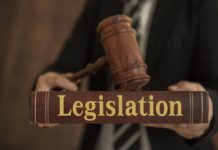Federal Court. Was AAT required to make a finding about the actual likelihood of sponsor and partner visa applicant being half-siblings? Is the combined effect of s 88C and s 88D of the Marriage Act 1961 (Cth) that a marriage that is valid under foreign law shall be recognised in Australia as valid, unless one of the exceptions in ss 88D(2) to (5) is engaged? While a marriage is prima facie valid pursuant to s 88G(1), do s 88D and s 23B(2) prevail? Does s 12 of the Migration Act 1958 (Cth) have the effect that s 88G(1) of the Marriage Act applies to an administrative decision concerning a partner visa application, despite s 353 of the Migration Act?
The Appellant's partner applied for a partner (subclass 309) visa, sponsored by the Appellant. The Federal Court (FCA) described some of the relevant facts as follows:
3 Under subclause 309.211(2) of Schedule 2 of the Migration Regulations 1994 (Cth) an applicant for a Subclass 309 – Partner (Provisional) visa meets the requirements for the visa if the applicant is the spouse or de facto partner of an Australian citizen, an Australian permanent resident, or an eligible New Zealand citizen. Under s 5F of the Migration Act 1958 (Cth), a person is a spouse of another person if the two persons are in a married relationship, which requires that the marriage be valid for the purposes of the Act. For the purpose of deciding whether a marriage is to be recognised as valid for the purposes of the Migration Act, Part VA of the Marriage Act 1961 (Cth) applies as if section 88E of that Act were omitted: Migration Act, s 12. Under s 88D(2) of the Marriage Act, a marriage to which Part VA applies is not to be recognised as a valid marriage if, inter alia, the parties are within a prohibited relationship within the meaning of s 23B. Under s 23B(2) of the Marriage Act, marriages of parties within a prohibited relationship include marriages between a brother and a sister, whether of the whole blood or the half-blood. In relation to de facto partners, sub-ss 5CB(2)(d) and (4) of the Migration Act exclude persons who are related by family, which includes persons who have a parent in common.
4 On 4 September 2012, an officer of the Department at the Australian High Commission in Nairobi, Kenya, wrote to the visa applicant stating that she resembled the appellant, and that she might be related to him as a sibling. The Department afforded the opportunity of DNA testing, at the visa applicant’s cost.
5 On 20 November 2012, a private DNA testing laboratory operated by Genetic Technologies Corporation Pty Ltd and based in Melbourne produced a report of its DNA analysis of samples received from the appellant and the visa applicant. The report stated that testing was undertaken to determine the likelihood that they were related as biological siblings. Two analyses were undertaken. The statistical likelihood of the appellant and the visa applicant being related as biological full siblings was calculated as 1 to 1. The report stated that this was inconclusive as to whether the appellant and the visa applicant were related as full biological siblings. The statistical likelihood of the appellant and the visa applicant being related as biological half-siblings, compared to unrelated individuals, was calculated as 66 to 1. The report stated that there was moderately strong evidence to support the proposition that the appellant and the visa applicant were related as biological half-siblings, which using the language of the Marriage Act, indicated a likelihood that the appellant and visa applicant were a brother and a sister of the half-blood.
6 On 18 December 2012, the Department advised the visa applicant of the results of the DNA testing, and gave her an opportunity to respond. Subsequently, the appellant responded, disputing that he and the visa applicant were related as biological half-siblings.
7 On 31 July and 1 August 2013, an officer of the Department in Nairobi sent two emails to the DNA testing laboratory asking the following questions: (1) whether the results of the testing could reflect a cousin relationship; and (2) if the appellant and the visa applicant were to undergo the same tests, would they get the same result, that is, that they are half-siblings? A senior scientist of the laboratory responded by stating that the laboratory did not test the appellant and visa applicant for a cousin relationship, and that such testing was not, in fact, offered by it. The response continued –
Our sibling test is based on how much of their DNA they have in common and as cousins they would be more distantly related than as half siblings (so share less of their DNA), so in my opinion the chances of that relationship would be lower, but it is possible.
8 In a second response, the senior scientist stated that if the same people were to take the test again, they would get the same result.
9 On 19 March 2014, the Department advised the visa applicant that her application for a visa had been refused, concluding that the appellant and the visa applicant were related as half-siblings, and therefore they were not in a valid marriage for the purposes of the Migration Act, and nor were they in a permissible de facto relationship.
On review, and based on the same statistical likelihood of 66 to 1, the Tribunal affirmed the delegate's decision. The Appellant then applied to the Federal Circuit Court (FCCA) for judicial review of the Tribunal's decision, but the FCCA dismissed that application. The Appellant eventually appealed the FCCA's decision to the FCA.
The FCA also said as follows:
20 The appellant’s grounds of appeal are set out in the particulars under paragraph 3 of the notice of appeal, which claims that the primary judge erred in failing to find jurisdictional error in the Tribunal’s decision as follows –
...
(iii) The learned Judge erred in finding, at Paragraphs 52-4 of [her Honour’s] Judgment, that the Administrative Appeals Tribunal properly applied the applicable law and in not finding the Tribunal failed to proceed from applying the prima facie assumption of the validity of the Appellant’s marriage under Section 88G of the Marriage Act 1961 (Commonwealth) before considering Section 88D(2)(c) of the Act.
31 The third ground of appeal raises the question of the operation of s 88F and s 88G(1) of the Marriage Act, which are within Part VA of the Act relating to the recognition of foreign marriages.
34 Before the primary judge, the appellant relied on s 88F and s 88G of the Marriage Act, which provide –
88F Incidental determination of recognition of certain foreign marriages
Notwithstanding any other law, the question whether a marriage solemnised in a foreign country is to be recognised in Australia as valid shall be determined in accordance with the provisions of this Part, whether or not the determination of the question is incidental to the determination of another question.
88G Evidence
(1) A document purporting to be either the original or a certified copy of a certificate, entry or record of a marriage alleged to have been solemnised in, or under the law of, a foreign country and purporting to have been issued by:
(a) in the case of a marriage alleged to have been solemnised in a foreign country—an authority of that country or of that part of the country in which the marriage was allegedly solemnised; or
(b) in the case of a marriage alleged to have been solemnised under the law of a foreign country—an authority of that country;
is, for all purposes, prima facie evidence of the facts stated in the document and of the validity of the marriage to which the document relates.
…
36 The effect of s 88G(1) of the Marriage Act is that a document purporting to be a record of a marriage alleged to have been solemnised under the law of a foreign country is for all purposes prima facie evidence of the facts stated in the document, and of the validity of the marriage. Section 88G may be compared to s 102 of the Family Law Act 1975 (Cth), which is less prescriptive in its terms, and applies only to proceedings under that Act.
37 Attention must also be directed to s 88C and to s 88D of the Marriage Act, which provide (inter alia) –
88C Application of this Part
(1) This Part applies to and in relation to every marriage solemnised, whether before or after the commencement of this Part, in a foreign country where:
(a) under the local law, the marriage was, at the time when it was solemnised, recognised as valid; or
(b) if the marriage was solemnised by or in the presence of a diplomatic or consular officer of another foreign country:
(i) under the law of that other foreign country, the marriage was, at the time when it was solemnised, recognised as valid; and
(ii) at the time when it was solemnised, the solemnisation of the marriage was not prohibited by the local law.
(2) Where a marriage (not being a marriage referred to in subsection (1)) that was solemnised, whether before or after thecommencement of this Part, in a foreign country:
(a) is, at any time in relation to which the validity of the marriage falls to be determined, recognised as valid under the local law; or
(b) if the marriage was solemnised by or in the presence of a diplomatic or consular officer of another foreign country and, at the time when it was solemnised, the solemnisation of the marriage was not prohibited by the local law—is, at any time in relation to which the validity of the marriage falls to be determined, recognised as valid under the law of that other foreign country;
this Part applies to and in relation to the marriage from and including that time.
88D Validity of marriages
(1) Subject to this section, a marriage to which this Part applies shall be recognised in Australia as valid.
(2) A marriage to which this Part applies shall not be recognised as valid in accordance with subsection (1) if:
…
(c) the parties are within a prohibited relationship within the meaning of section 23B; or
…
…
38 Section 88D(2)(c), set out above, refers to s 23B(2) of the Marriage Act, which provides –
23B Grounds on which marriages are void
…
(2) Marriages of parties within a prohibited relationship are marriages:
(a) between a person and an ancestor or descendant of the person; or
(b) between a brother and a sister (whether of the whole blood or the half-blood).
…
39 It is relevant to an understanding of ss 88C, 88D, 88F, and s 88G(1) of the Marriage Act to have regard to the interpretation provision in s 88B(3) –
88B Interpretation
(1) In this Part, unless the contrary intention appears:
…
local law, in relation to a marriage solemnised in a foreign country, means the law in force in the foreign country or in that part of the foreign country in which the marriage was solemnised.
…
(3) In this Part, a reference to a marriage includes a reference to a purported marriage that is void or voidable but does not include a reference to a marriage solemnised under Part V.
…
40 Before the primary judge, counsel for the appellant submitted that the Tribunal had failed to recognise that s 88F and s 88G of the Marriage Act required that the appellant’s marriage to the visa applicant be prima facie recognised as being valid because the marriage was evidenced by a marriage certificate. Counsel submitted that in this context the 2012 DNA test results had been given improper weight.
41 The primary judge rejected the appellant’s claim, holding at [54] that while the marriage was prima facie valid, the provisions of s 88D and s 23B(2) prevailed. On appeal, counsel for the appellant submitted that the primary judge had erred, and that s 88D was concerned only with facts that might be proven to rebut a presumption established by s 88G(1).
Some of the questions to the FCA were as follows:
Question 1: Was the Tribunal "required to descend to make a finding about the actual likelihood of the appellant and the visa applicant being half-siblings"?
Question 2: Can it be said that "the Tribunal was not required to undertake a considered analysis of the discrete possibility that the appellant and the visa applicant might be cousins because that possibility had been addressed as part of, and was subsumed by the DNA evidence upon which the Tribunal acted, ... particularly in the context where the appellant and the visa applicant had been given reasonable opportunities to undergo further DNA testing"?
Question 3: Can it be said that, "at common law, upon proof that a marriage ceremony was duly performed, a presumption arises in favour of the validity of the marriage, casting upon those who deny the validity of a marriage the burden of producing reasonable evidence of a fact that renders the marriage void"?
Question 4: If the answer to Question 3 is "yes", does that presumption extend to marriages in foreign places and under foreign law?
Question 5: Can it be said that "the combined effect of s 88C and s 88D [of the Marriage Act] is that a marriage that is valid under foreign law shall be recognised in Australia as valid, unless one of the exceptions in sub-ss 88D(2) to (5) is engaged"?
Question 6: If the answer to Question 5 is "yes", does this construction have "the consequence that in proceedings where there are pleadings and where the rules of evidence apply, a party seeking to invoke one of the exclusions in sub-ss 88D(2) to (5) of the Marriage Act would ordinarily have to raise the issue and adduce evidence, following which a court would evaluate the totality of the evidence having regard to the identification of which party bears the legal burden of proof, and the gravity of the underlying matters alleged"?
Question 7: Can it be said that, "while the marriage was prima facie valid [pursuant to s 88G(1)] , the provisions of s 88D and s 23B(2) [of the Marriage Act] prevailed"?
Question 8: The FCA said: "The appellant’s argument assumed that s 88G(1) otherwise applied to a review by the Tribunal. I raised this assumption with counsel during the course of the hearing, but it was not the subject of full argument. The Tribunal was not bound by technicalities, legal forms, or rules of evidence, and was required to act according to substantial justice and the merits of the case: Migration Act, s 353. However, s 88G(1) of the Marriage Act provides that a document to which it applies is, “for all purposes”, prima facie evidence of the facts stated in the document and of the validity of the marriage". May that assumption be supported "by construing s 12 of the Migration Act, which provides that Part VA of the Marriage Act applies for the purpose of recognising whether a marriage is to be recognised as valid, as making s 88G(1) of the Marriage Act applicable to all decisions under the Migration Act, whether administrative or curial"?
Question 9: Alternatively, would it be possible "to treat s 88G(1) of the Marriage Act as a rule of substantive law, consistently with its origins as an implementation of a Convention obligation, so that it applies to an administrative decision-maker such as the Tribunal, which in any event was required to act according to substantial justice and the merits of the case"?
Question 10: Can it be said that, "even if the Tribunal was required to treat the marriage certificate as prima facie evidence of the validity of the marriage for the purposes of recognition under s 88D, ... there was no material error in the Tribunal placing significant weight on the 2012 DNA test results and no weight on the marriage certificate"?
Question 11: If there was "any error by the Tribunal in failing to have regard to s 88G(1) of the Marriage Act as giving rise to a prima facie presumption of recognition of validity for the purposes of s 88D", can it be said that such an error "was not material, because there was no realistic possibility of a different outcome having regard to the other evidence that the Tribunal accepted"?
The FCA answered those questions as follows:
The remainder of this article is only available to Case Law and Platinum subscribers.
Read our Terms & Conditions and upgrade below:
Monthly Subscriptions
Annual Subscriptions
Where GST applies, the above amounts are inclusive of GST.
Content Types
Basic Content includes basic news, some media articles and selected announcements.
Premium Content includes all our content, except for Case Law Content. In other words, it includes Basic Content, plus all our articles on legislative and policy changes, industry updates and the Migration Legislation Tracker.
Case Law Content includes Basic Content, plus case law summaries, analysis and extract, but does not include Premium Content.
Platinum Content includes Basic Content, plus Premium Content, plus Case Law Content. In other words, it includes ALL our content.
If you already have a Case Law or Platinum subscription, click on 'Login' below.










